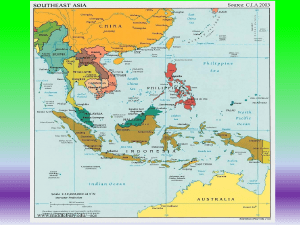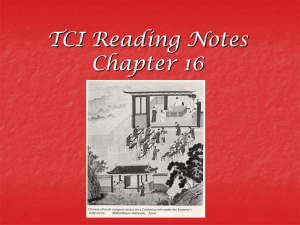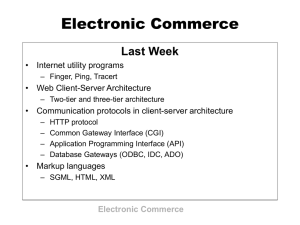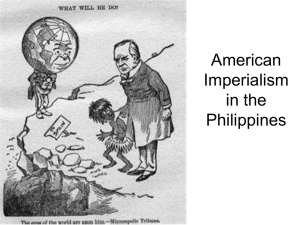Importance of Natural Resources and the Livelihood of the Early
advertisement
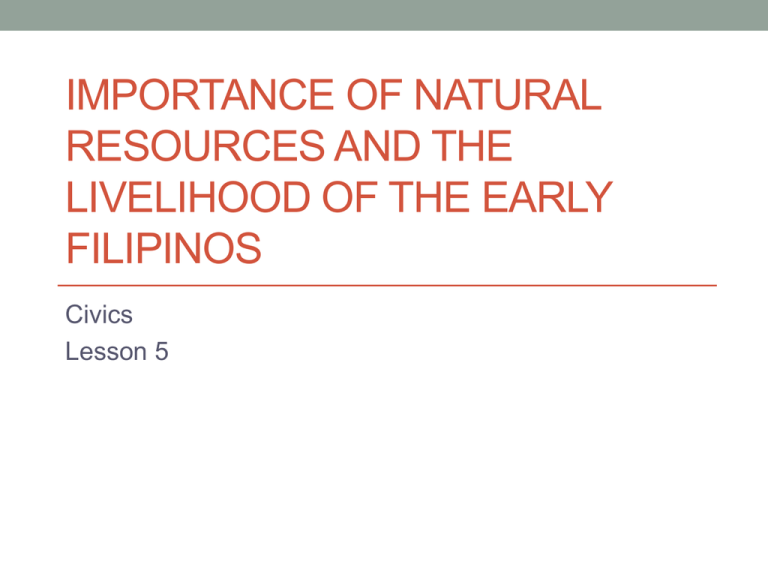
IMPORTANCE OF NATURAL RESOURCES AND THE LIVELIHOOD OF THE EARLY FILIPINOS Civics Lesson 5 Technology Development • The old stone age (50,000 BC - 8,000 BC) • New stone age (8,000 BC - 500 BC) • Metal age (200 BC - 1000 AD) The old stone age • Filipinos used instruments of rough stones that they sharpened • these instruments were made from chert, andesite and opaline • they used these instruments for hunting, fishing, and getting food inthe forests New stone age • the early filipinos learned to smoothen the rough stone instruments • the stone instruments that they used to cut trees and bones of animals were shaped like an ax • the instruments were made of hard shells and stone made of nephrite and jade • they also made instruments for cooking, jar and the jug as water container or a burial place for the dead • cooked food by using fire Metal age • they discovered to use metals such as iron and gold • they use these metals to make jewelry, armor and industrial equipment • they also learned carpentry and cloth weaving using the blackloom Natural Resources and Livelihood • The center of industry of the early Filipinos was • • • • • farming.They planted corn, rice, coconut, abaca, sugar cane, banana, vegetables and root crops. They learned the system of irrigation. example is the rice terraces Fishing and diving They made boats for trade and battle. They call the boats karakoa, prau, vinta, birey, lapis and topaque. Mining - our country is rich in minerals like gold, tin, silver and iron Wine industry - tuba and lambanog from coconut, basi from sugar cane, pangasi and tupay from rice 2 system of farming • kaingin • cultivation Kaingin • is also called slash and burn method • was done by clearing, burning and cutting trees in the forest. then they would plant and grow different plants in this site Cultivation • they toiled and tilled the land with the help of a carabao. 2 System of Land Ownership • Private • Public Private Property • lands which were inherited, bought or given as a gift. • these are lands owned by the datus Public Property • land that were very difficult to cultivate,not fertile or near the mountains • anyone could farm in these lands • rivers, forests, mines and other places Early Commercial Trade • Interisland Commercial Interaction • Interaction and Trade with Foreigners • The Orang Dampuan-Filipino Commerce • Chinese-Flipino Commerce • Arab-Filipino Commerce • Hindu-Filipino Commerce • Japanese-Filipino Commerce Interisland Commercial Interaction • trading of products in other provinces or islands in Luzon, Visayas, Mindanao • barter system was the way of commerce. it was done by exchanging products with other products such as farm products, animals and the aliping saguiguilid Interaction and Trade with Foreigners • the many islands in our country became attractive locations for trade and commerce with foreigners The Orang Dampuan-Filipino Commerce • they were the first group of Chinese merchants who sailed in from southern annam, vietnam • they were in small, flat-bottomed open boats called champa or champans • they trade with the early filipinos in sulu from 900 to 1200 AD • they had a trading misunderstanding with another group of traders, the Buranos, they left the Philippines and returned to their country Chinese-Filipino Commerce • traded with China during Tang dynasty in the 10th century BC • products were silk cloth, porcelain, gold thread, jade, mirror, musk Arab-Filipino Commerce • Arabs arrived in Mindanao in the 9th century • they traded religion, Islam and government, Sultanate • products were carpet, muslin, oilcloth, linen, metal instruments and gems Hindu-Filipino Commerce • there was no direct interaction between Philippines and India • it was through Indonesia that India and Philippines had a chance to engage in commerce. • traded sanskrit words such as wika, isla, sampalataya, halaga, diwata, asawa, tala • system of writing, wearing of sarong and the putong Japanese-Filipino Commerce • the japanese came to Manila and at the coastal towns of the Lingayen Gulf and Cagayan on 654 AD and in 13th century • traded shell and fish industries • duck-raising, armor-making and skin coloring • japanese taught the Filipinos the values of creativity, hard work and loyalty Q&A • The age where Filipinos used instruments made of rough stones. • Old Stone Age • The system of farming which toiled and tilled the land with the help of a carabao. • Cultivation • The system done by exchanging products with other products. • Barter System • The system done by clearing, burning and cutting trees in the forest. • Kaingin System • The first group of Chinese merchants who sailed in from southern Annam, Vietnam. • Orang Dampuan • The lands which were inherited, bought or given as a gift to the datu. • Private • The lands which were very difficult to cultivate, not fertile and near the mountains. • Private • They are the first came to manila and taught about the fish industries, duck raising, armor-making and skin coloring. • Japanese-Filipino Commerce • They brought silk cloth, porcelain, gold thread, jade, mirror, musk and others in the Philippines. • Chinese-Filipino Commerce • The exchange of products with other Filipinos in other provinces or islands. • Interisland Commercial Interaction Explain the system of farming of the early Filipinos. • Our forefathers used the two systems of farming. The kaingin and the cultivation. The kaingin is a system done by clearing, burning and cutting trees in the forest. Cultivation is toiling and tilling the land with the help of a carabao. Describe the local and foreign commercial trades of the early Filipinos. • The foreign commercial traders like chinese exchange their products of silk cloth, porcelain, gold thread and others. Our forefathers traded rootcrops, pear and shells. • The Japanese traders, taught us the values of creativity, hard work and loyalty.





